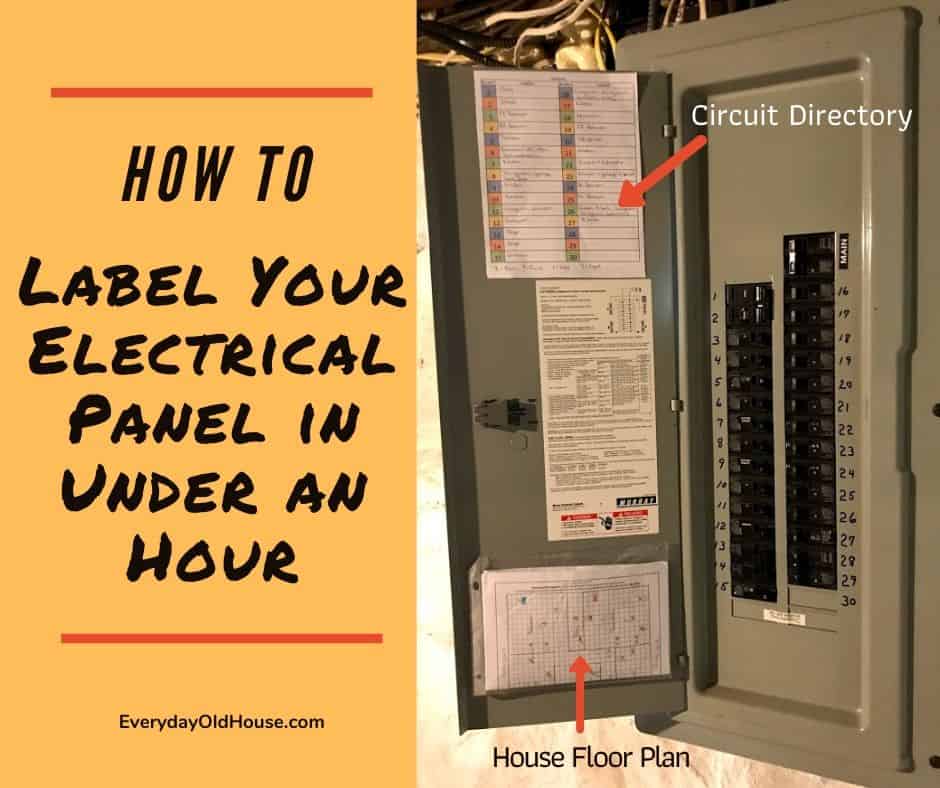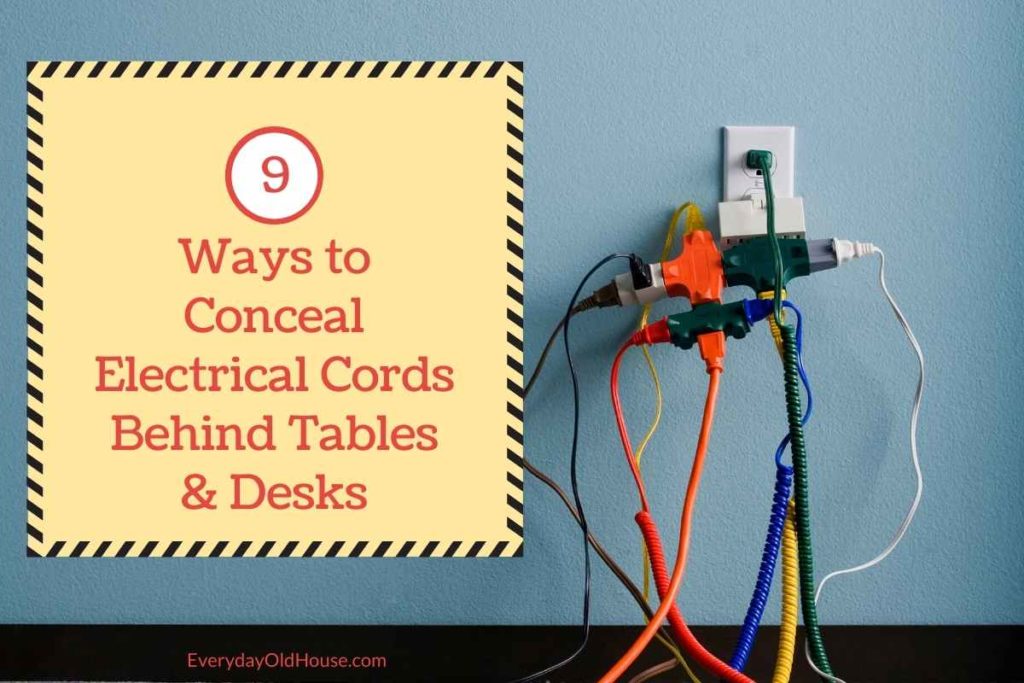Chances are you don’t think much about your home’s electrical system. Of course, that changes when the power goes out at 10pm and you’re scrambling for a flashlight and standing in front of your electrical panel scratching your head. It’s essential to have a basic understanding of your home’s electrical system – so that when an electrical problem arises you can react quickly and safely. Here’s 14 basic things every homeowner should know about how their circuit panel works.
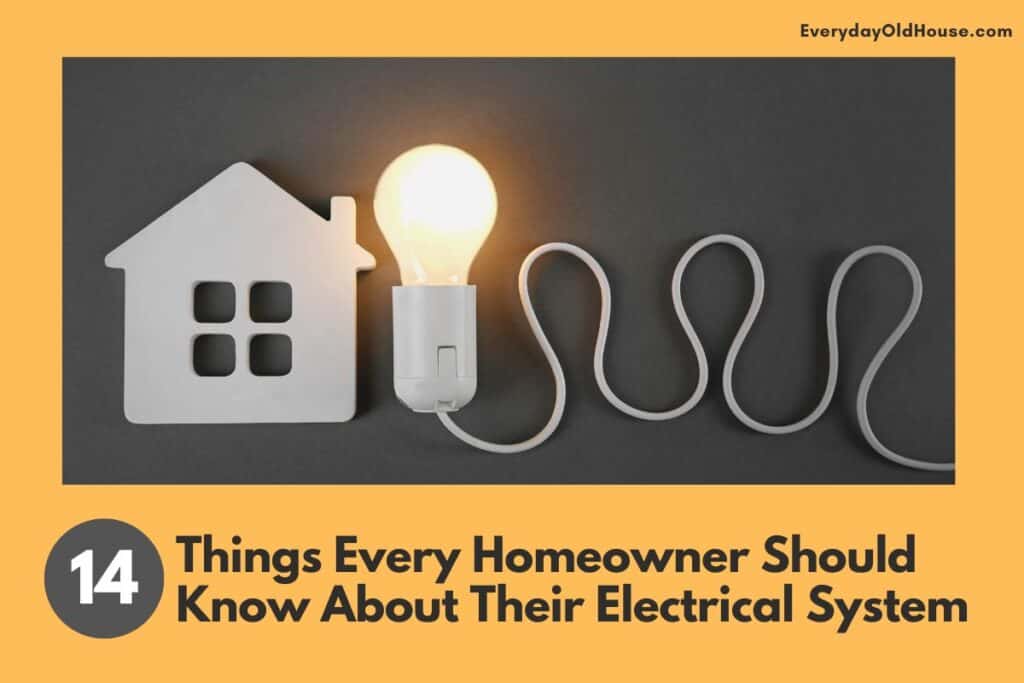
What Every Homeowner Should Know About Circuit Panels
Living without electricity would be, well, almost impossible. And while the benefits of electricity are immense, it does come with a risk for house fires and electrocutions.
These stats on electrical house fires should be a wake-up call for homeowners to better understand how a circuit panel works:
- 51,000 fires each year
- 500 deaths
- 1,400 injuries
- $1.3 billion in property damage
Significant right? On top of that, electrocutions attribute to 400 deaths per year.
And while there are other ways to prevent fires, including fire extinguishers and escape plans, a basic understanding of your home’s electrical system and how your circuit panel works can help you and your family stay safe.
So, here’s are 14 electrical panel basics every homeowner should know:
1. What is a Circuit Panel?
A circuit panel refers to the box that houses the main components of your electrical system. Enclosing these major electrical components protects them from water and dust. And in turn, this box also protects the rest of the house from any usual electrical discharges from these parts (i.e. sparks that could start a fire).
Think of your electrical system as the home’s “nervous system”. The electrical panel is the “brains” of the house, and the connected wires act like “nerves” sending electricity to the rest of the body… wait I mean the rest of the house. ?
Circuit panels are commonly referred to as electrical panels. But they also go by several names – breaker panels, circuit breaker box, fuse box, etc.
2. Where Do You Find Your Electrical Panel?
Where the heck is this box? Electrical panels are usually grey, metal boxes. Not the most attractive home décor. So luckily, electrical panels are commonly hidden away from the obvious living areas of your house.
Your electrical panel is probably inside your home, which helps it stay dry. However, in rare cases with old houses, they can be located outdoors.
Typically, electrical panels are in these 6 areas:
- Garage
- Basement
- Storage Rooms
- Closet
- Hallway
- Pantry
Note that while most homes have one electrical panel, some haves subpanel somewhere else in the house. For example, we have a subpanel in our basement about 10-15 feet from our main panel. We believe it was installed during a previous kitchen renovation.
3. What are the Main Parts of a Circuit Panel?
Now that you’ve found your electrical panel and opened the cover, you might be curious what exactly you are looking at. How exactly does this circuit panel work?
But before you start touching things (hands off!!!), you should be able to first identify these basics parts of an electrical panel:
Main Circuit Breaker
The main breaker controls all the power coming into your house. In other words, it’s the main “on/off” switch for the entire home. It receives the incoming power from the street and distributes it to the individual circuits.
Circuit breakers are designed to keep you and your home safe from power surges and overloads. If you have an emergency, flip this switch to cut the supply of power completely from your home.
But just remember ALL the lights will go out. So if this happens and your panel is located in a dark basement, please remember to bring a flashlight with you. I speak from experience…..
Individual Circuit Breakers
The wires from the main circuit breaker split off and distribute electricity to individual circuit breakers. Each of toggle switches you see in the panel (usually running down in two columns) is a circuit breaker. Commonly a circuit controls the electricity to outlets and switches to a particular room or area of the house. But that’s not the case in many old houses. We have a circuit in our old house that controls outlets on 2 different floors!
Commonly in single-family homes, you will see two types of individual circuit breaks: single-pole breakers and double-pole breakers:
Single Pole Breakers
Single pole breakers are the most common in residential electrical panels. They are usually provide 15-20 amps, which is sufficient enough to run most electronic devices.
Double Pole Breakers
But sometimes you need a bit more boost. Double pole breakers supply that additional electrical capacity to the larger appliances in your house, such as washers, refrigerators, and air conditioners. These breakers have more amps than the single-pole, commonly 30-50 amps, but sometimes up to 70-amps for large HVAC units.
Empty Spaces
Seeing empty slots without circuit breakers is usually good news. Empty spaces in the panel usually means your electrical system have room to accept additional circuits in the future for increased electrical needs. Yippee!
Wires
While many things in your house are wireless, the electrical panel is not one of them. The electrical panel houses a significant number of wires that run from the main breaker to the individual circuit breakers, and out of the panel to provide service throughout house.
Depending on how much patch work has been done (especially with old houses) or who worked on your electrical system, these wires could be neatly organized or a tangled mess that looks like a string of Christmas tree lights.
AFCI (Arc Fault Circuit Interrupter)
You may or may not have this in your electrical panel, but these are worth a mention. AFCIs, also known as an Arc Fault Detection Device (AFDD) are “smart” breakers. These are circuit breakers with additional bells and whistles above and beyond the traditional circuit breaker that provides a higher level of protection of fire hazards.
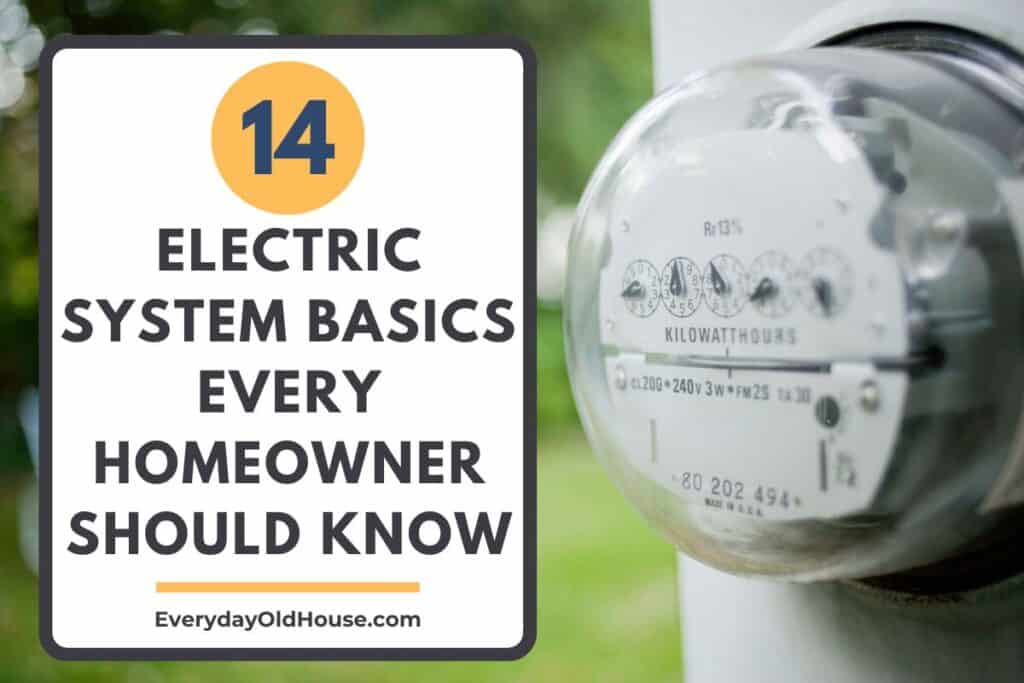
4. But I Don’t See Switches??? (aka Fuses …)
Circuits panels work through switches that you toggle on and off, just like what you see on a wall. But many electrical systems in older homes don’t run on switches, but on fuses. Fuses are colored knobs that are either pushed in or screwed into the panel.
Fuses and circuit breakers perform the same ultimate function – to disrupt a high flow of electricity to stop damage to the house. However, when that happens, how you get the power back on differs between circuits and fuses.
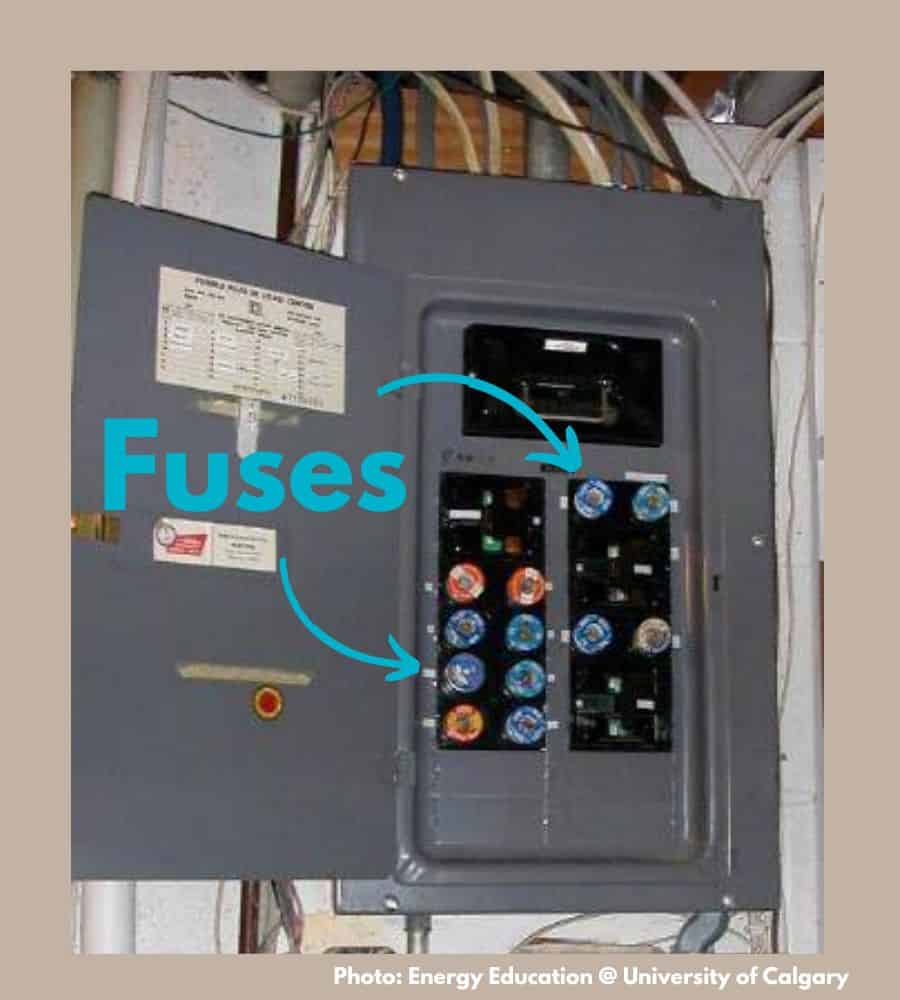
To re-set a circuit, you merely toggle the switch (more on that later). But fuses contain a filament that melts when it experiences high voltage. Once this happens fuses are no longer useable and need to be replaced.
Related Post: 5 Reasons Why Old Houses Catch on Fire
5. How Does My Home’s Circuit Panel Work?
Let’s step back from a minute and look at the big picture of how electricity works its way into and through your home. This is a simplistic overview, for a more detailed description, click here.
Electricity is generated at power plants and moves through a complex system, sometimes called the grid, to your area. Your local utility sends electrical power to your home from the utility grid through overhead power lines or buried underground cables. Electricity runs through the main lines through the power meter and into your home to the electrical panel.
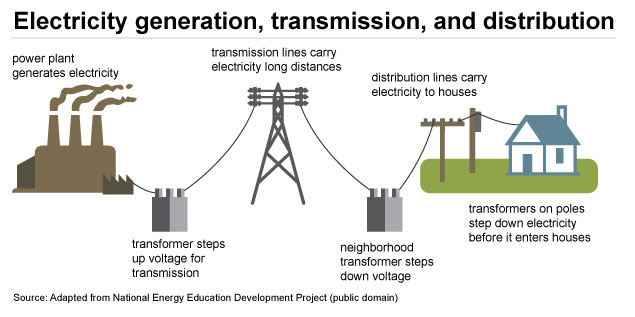
The circuit panel works by distributing the power around your home, like a switchboard. It sends electricity out to outlets and switches and then back to the panel in a circuit – aka a loop. When you flip a switch, you create a complete circuit for electricity to run through and provide power to the electrical device.
6. What Causes a Circuit to Trip?
If an electrical power surge or overload hits a circuit breaker, it, as their names suggest, automatically breaks or “trips” the circuit, stopping electricity from continuing its path further into the house.
Why is that important? Because power surges create sparks that start house fires.
The occasional tripped circuit shouldn’t be a source of worry. But if you find yourself heading to the electrical panel more than expected to toggle the circuit breaker, it may be an indication that something is not quite right in your electrical panel.
Potential problems could be 1. insufficient capacity or 2. short circuits:
Insufficient Capacity
If you have just one breaker that trips often, you probably have too many power-hungry appliances -commonly space heaters in the winter, or window air conditioners in the summer – connected to that circuit.
This is usually an easy fix by simply removing some of the electrical devices from that circuit and putting them on a different one. Or don’t run too many devices at once at the same time. For example, I know the majority of our upstairs electrical is run on one circuit. During the summer I can’t vacuum the upstairs when all the window unit air conditioners are also on. I need to turn off one or two units before powering up the vacuum.
However, if it’s more than one breaker that continually trips, your home may have reached its limit on electrical power. (Another sign is that your electrical panel is warm to the touch). You might need to upgrade your whole electrical system.
Short Circuit
A short circuit occurs when an electric wire (called a “hot wire”) touches a neutral or grounded wire. The causes of short circuits can be hard to pinpoint – sometimes it’s a simple as a mouse getting into your home and damaging the wiring.
If you think an electrical device is causing the short, shut off the circuit breaker that controls power to that outlet. Check power cords and the outlet itself. See any melting? Smell any burning?
Head to the electrical panel. When you reset the circuit breaker, does it instantly trip again? Do you see sparks? (obviously not good….)
Short circuits can be hard to pinpoint, so call an electrician immediately for assistance.
7. How Do You Reset a Tripped Circuit Breaker?
If you trip a circuit, the breaker is simple to reset and restore power.
- Turn off power switch of the electrical appliance that caused the trip – window air conditioner, blow dryer, etc.
- Head to the electrical panel and find the circuit breaker switch that doesn’t face the same direction as the others.
- Flip the switch all the way to the “off” position, then back to the “on” position.
Now you should be able to use your electrical devices again.
8. Do Circuit Panels Have to Be Labeled?
Here’s a short answer – YES! It’s important to know what parts of the house your circuits are assigned to. Otherwise you might find yourself fumbling in the dark playing guessing games, which is never a good thing during an emergency. Know ahead of time what area of your house you are affecting when you toggle your circuit breakers on and off.
Luckily, labelling your electrical panel can be done quickly and easily. Grab a partner and this printable electrical panel directory to hammer out which circuit serves which part of the house.
9. Do Electrical Panels Need Regular Maintenance?
Yes. Like every system in your home, the condition of your electrical panel should be checked every so often. Experts recommend hiring an electrician once every 3 years to perform regular maintenance to ensure that your circuit panel works correctly.
What does that entail? The electrician will remove the cover and inspect all breakers and connections. They will also do a thermal check to detect any abnormal high temperatures that could indicate an electrical issue.
10. What is the Life Expectancy of an Electrical Panel?
Like all building components, electrical panels have a life expectancy. The actual lifespan varies based on several factors, such as amount of usage, geography, maintenance, and quality of materials.
In general, a circuit panel works about 25-40 years. However, some experts suggest that some electrical components can last up to 60 years!
11. When is it Time to Replace My Circuit Panel?
The #1 reason you’ll likely replace your panel is to increase amperage. Perhaps it’s an addition or major renovation. Or installing a pool, hot tub, larger appliances, etc..
However, there are several other signs that indicate that an electrical panel needs to be replaced or updated, such as:
- Electrical panel smells burnt
- Breakers frequently tripping (i.e. overloaded circuits)
- Insufficient outlets
- Dimming or flickering lights
- Rust on Panel (i.e. corrosion)
- Panel making weird noises
- Panel feels hot
If your electrical panel experiences any of these signs, it’s time to call an experienced electrician.
12. What’s the Cost to Upgrade a Circuit Panel?
The cost to upgrade your home’s electrical panel varies widely depending on the scope of the work. The average cost of an electrical panel upgrade is between $1,300 and $3,000. This is typical for upgrading from 100 amps to 200amps. If you are looking for an even bigger upgrade, you might be paying as much as $4,000.
The best way to estimate cost is to have an electrician provide a detailed quote. Better yet, as with all home improvement projects, reach out to at least 3 contractors to make sure you are getting the best contractor on the job.
13. DIY or Hire a Professional?
There are significant safety risks working with electricity. Unlike the small shock you might feel from an outlet, a shock from the electrical panel can be fatal. And attempting to do it yourself could cause more serious damage to your house, requiring repairs.
Should you work on your electrical panel? This is a question you can only answer for yourself.
But, if you are reading this post, then you are probably an electrical newbie. For your safety and for your wallet, when it comes to anything beyond an occasional tripped circuit, call an expert electrician.
14. Do I Need a Permit to Upgrade My Circuit Panel?
Maybe, depending on where you live. Rules for permits are set by individual municipalities. Check your town or city’s website to see how they handle electrical permits. Since you will likely be hiring an electrician to perform the upgrade, they will likely take care of the permit for you. But check with them to ensure they will be responsible for pulling the permit and not get you in trouble with your municipality’s building inspector.
Related Posts
Want to be the first to know about new posts? Be sure to follow me on Pinterest, Facebook, Instagram or Twitter of even Etsy! Or better yet… Subscribe below!
My monthly (admittedly sometimes more, sometimes less….) emails are like receiving a unexpected letter from an old friend WITHOUT needing to put on your slippers and walk out to your mailbox…. See? I got ya, my friend!)
[Note: My posts are proudly connected to these amazing link parties full of DIY ideas and inspiration!]
